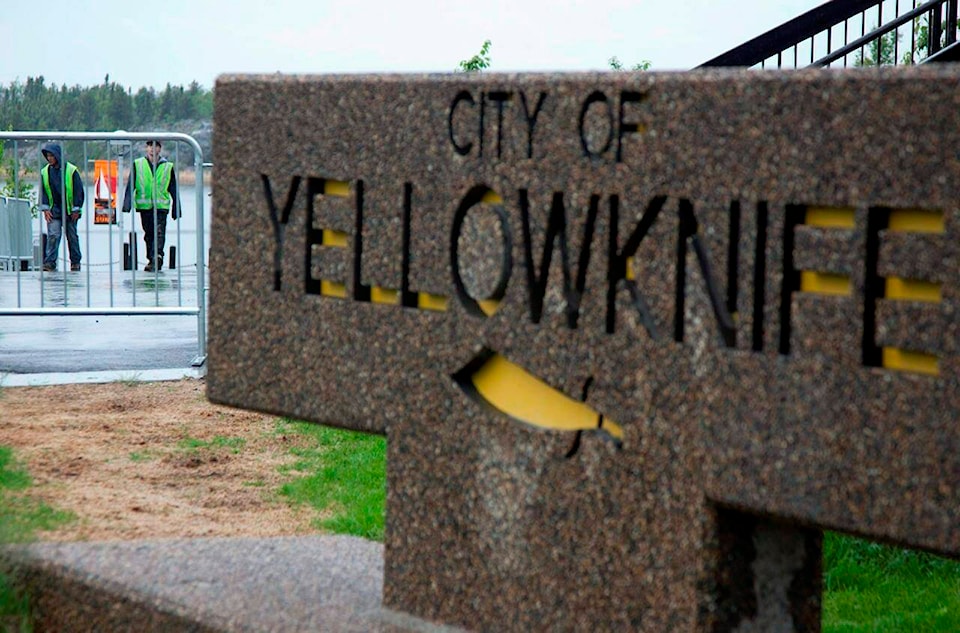In the lead-up to the 2022 Yellowknife council election on Monday, we asked all 16 candidates to answer five pressing questions:
1. Do you agree with the sale of the 50-50 Lot to Holloway Lodging Corp. for $1 to facilitate affordable housing?
2. Is homelessness in Yellowknife a city responsibility or GNWT responsibility?
3. How should the city prepare for the winding down of diamond mines in the NWT?
4. With the city spending tens of million of dollars on a new aquatic centre, are there other recreational facilities/services you would like to see?
5. What is the most important issue facing the city over the next 10 years?
Twelve of the 16 candidates, along with Mayor Rebecca Alty, submitted responses before our deadline. Each answer below follows the sequence of numbered questions above.

Garett Cochrane
1. I do agree with the city’s plan to sell the lot below appraised market value in principle, but I disagree that this decision is being made in the middle of an election, and I need to know more about the fail safes put in place through the caveats. I saw it sit vacant with since 2014 with no interest, beyond the failed development of a park, and this sounds like the best and only plan we have had in years.
I’m excited that we will be partners in this by our innovative version of a “capital subsidy,” as I want us to be the ones who define “affordable” and, most importantly, having say in the construction completion date. This is also a new revenue opportunity without us building new infrastructure and without new taxation, which is something which we need more of.
I do want Holloway to demonstrate it’s a serious partner in this by acts of good faith, such as offering leasing in the mall below market value and working with the Quality Inn at reopening the gate separating the upper and lower parts of the mall, which the residents of Northern Heights have continuously told me they want done. Doing nothing while we keep on playing the waiting game for a purchaser seems to be the only other option and that’s unacceptable.
2. In theory, it should be the GNWT’s sole responsibility, but the reality is the city is already doing more than its share with Community Advisory Board on Homelessness (CAB) and waiting for GNWT to do more is not an option as the problem worsens every year. We need to both lobby and partner with the GNWT to start solving the issue.
The city will have to work in partnership with the GNWT, primarily the Department of Health and Social Services, to put trained social workers on the ground that could intervene and de-escalate violent situations with our highly traumatized homeless population, escorting them to the nearest shelter for treatment. We need to lobby for permanent on-the-land healing programming down the Ingraham (Trail), where that population can head out daily for activities more conducive for continued sobriety, like what was done with the Aurora Village during Covid.
This needs to be about healing and lobbying the minister of Health and Social Services and cabinet to finally move toward an in-the-North treatment centre. This needs to be done in tandem with our municipal enforcement officers on the ground around 48 and 49 St. acting as peace officers by enforcing the bylaws and being seen to keep the peace. We do not need to expand the powers of the officers, but we need to assure a version of holistic public safety in our downtown core, primarily through de-escalation and not prosecution.
3. Lobby for continued investment by the GNWT in other sectors, such as knowledge and tourism to diversify the economy, but though the diamonds mines are closing, that doesn’t mean large mineral resource projects (Prairie Creek and Colomac) and exploration are not going to continue throughout the North.
We must ensure we remain the logistics and central hub for the territory. I think we can address this immediately by assisting industry in both their labour and accommodations shortages by allowing new developments such as the Nest and Watermark 2 getting off the ground and allowing regulated workers camps to exist within city limits.
4. After the completion of the new pool, and when inflation is back under control, I would like to convert the Ruth Inch Memorial Pool in a multi-use space that houses the Yellowknife Public Library, an indoor skate park and a shared arts space. This, of course, will have to be done after both a feasibility and structural study, and not until a few years down the line. But turning mid-town into a recreational hub is something I prioritize for the future.
5. Cost of living.
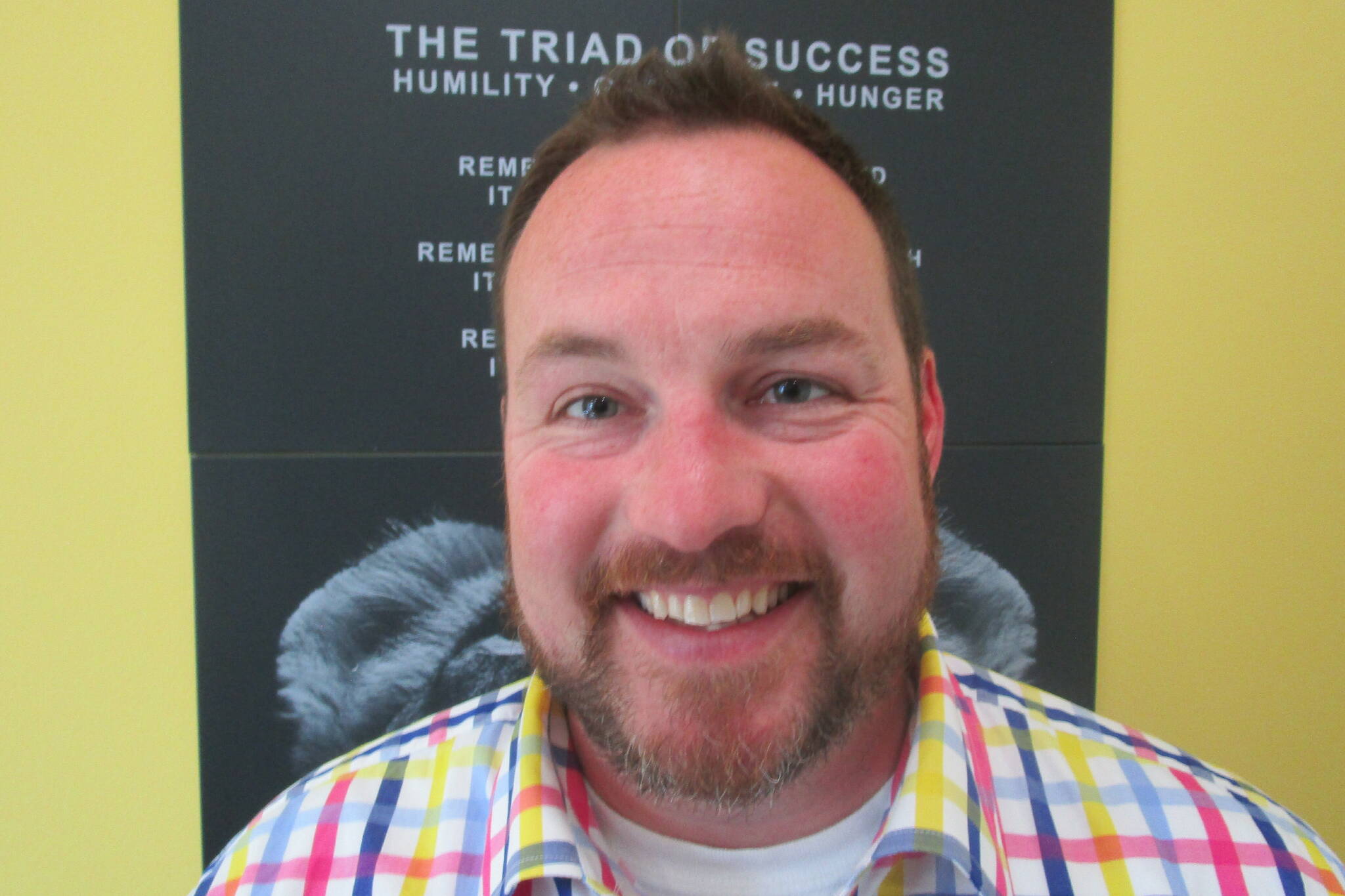
Ryan Fequet
1. Yes. The 2019 Community Plan data estimates that demand for low-density housing will surpass supply by 2025 and commercial demand will surpass supply by 2035, so the city must bring additional units online as soon as possible.
The cost of the sale — in this case less than one per cent of the city’s $100 million budget — is less important in my opinion than how the development will address revitalization of the downtown core and the housing shortage, two of the city’s main priorities. The city has been trying for many years to do something with this space and only received a single proposal in response to its recent request for proposals. The city’s general terms and conditions for purchasing land require the developer obtain their building permit within 12 months and complete construction within 24 months, and, if not, the land would revert to the city.
This is a great example of the strategic thinking I would expect from council in their role to balance short-term financial gain against longer-term benefits.
2. Both. The lack of sufficient services for the under-housed population (territorial shelter and supporting services integrated within) directly impacts Yellowknife’s public safety, businesses, and the vibe experienced by tourists and Yellowknifers alike. There are federal dollars from great initiatives such as the Reaching Home Strategy that Yellowknife needs to better leverage among its negotiations and work with the GNWT.
The city also needs to be a stronger advocate for itself both within territorial and federal initiatives as there have been tens of millions of dollars lost towards housing, if the city was able to work directly with the federal government instead of relying on the GNWT as a middleperson.
3. Mining is a significant economic driver across the NWT and I don’t see that changing in the next four years as mineral exploration is actually on the rise post-Covid in several areas of the Mackenzie Valley.
The city needs to ensure it has a strong partnership with the NWT and Nunavut Chamber of Mines and the GNWT to ensure socio-economic agreements include conditions, such as maintaining a head office in the North to avoid the loss of 100 families in a high-income bracket when Dominion relocated its head office for the Ekati Mine from Yellowknife to Calgary. The city also needs to be an active participant in the various closure processes of the Diavik, Ekati, and Snap Lake mines as they look to relocate and repurpose much of their existing infrastructure and physical assets to reduce their own liability and clean-up costs.
As land claims continue to be negotiated and finalized, there will be greater certainty for potential resource developers that will promote the North and its community even further.
4. Looking at the 2022 consolidated budget, which includes expenditures for 2022-2024, between the $4 million for upgrading the fleet, $3 million towards implementing the Corporate and Community Energy Action Plan, $67 million for the (new) pool, the $3.5 million expansion to the fire hall, the $10 million dredging of Fiddler’s Lagoon and landfill expansion, the $10 million submarine water supply line, and $6.6 million towards improvement to aging infrastructure, I don’t think it’s realistic to plan for additional recreational facilities at this time, especially until we have more information from the Asset Management Group on the actual life-cycle costs of our existing infrastructure.
If resources weren’t an issue, I would like to see the vision discussed by outdoor user groups 10 years ago come to life: an outdoor sports-plex located on the Con Mine property, once remediated, with baseball diamonds, soccer pitches, beach volleyball courts, a water/skate park, and a canteen to be operated by local not-for-profit groups.
5. The answer, in my opinion, is twofold: keeping people here and welcoming new faces, more commonly characterized as supporting the under-housed population and ensuring affordable housing.
If we can’t do everything in the city’s power and successfully partner with, and leverage, the GNWT to address the current situation, businesses will continue to suffer, people will have fewer amenities available and their desire to live here wains. Tourism won’t flourish to pre-Covid levels, and the mass exodus will continue. So many employers have successfully hired individuals and their relocation to Yellowknife was hindered because of housing availability.
If we don’t support our existing neighbours and create space for those wishing to put down long-term roots and those hoping to come North for the experience, this city will be having a very different conversation about cutting services in the coming years.
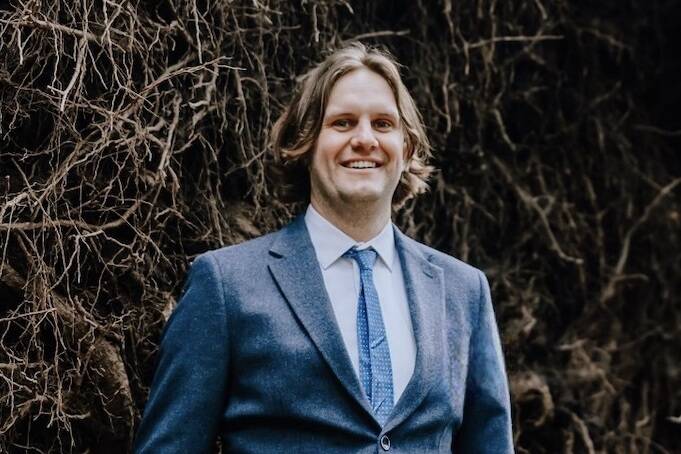
Ben Hendriksen
1. I do not agree with the plan. If Holloway was paying market rate, I would have no issue with the development as vaguely explained to date. My concern is a potential sale to the current owner of the upper mall who has shown no interest over the years in improving the quality or usability of the part of Centre Square Mall they own. Why does council think that this company will be good shepherds of a new development?
On the issue of affordable housing, “affordable” is not defined clearly anywhere in this process at present. Without clear requirements for price and number of units, the development will put profit over affordability. I don’t blame Holloway for that. Profit-making for investors is their responsibility. I blame council for putting too much “faith” in the future of this project.
2. Both. It’s also the responsibility of the federal government, and all of us as neighbours of people without housing. Many under-housed also suffer addiction and psychological and physical trauma. Working to support people without housing is the responsibility of all of us through all levels of government. Locally, the city needs to be working so that grassroots community supports are coordinated. The city must also work with others across the NWT so we can all support people who have ended up calling Yellowknife’s streets home.
Territorially and federally, the issue is funding and planning. We know what’s needed, which is the provision of treatment centres and the provision of supported living housing units for people in recovery. It is now the job of the GNWT and the federal government to live up to their words about reconciliation and fund the services we know are needed.
3. Mining is at the core of Yellowknife’s recent history and will continue to be in our future. We are likely to see an economic softening with the winding down of the diamond mines, but history has shown that with the right environment, new mining opportunities, like the Nechalacho rare earth mine, will start to become an economic engine to the city and territory.
To take advantage of the economic benefits that come from investment in Yellowknife and the NWT, we need to focus on creating a livable city that fosters community pride and an atmosphere where entrepreneurs want to live and invest. Prosperous cities are cities that attract and foster the development of investment because of the interesting and innovative people that live there.
4. We live in some of the most amazing nature in the world. The nature in and around Yellowknife is our recreational centre. I think the city needs to do as much as possible to support people to connect with and enjoy the nature in and around Yellowknife. Infrastructure for walking, cycling, skiing etc., while also maintaining accessible green space in the city, like Tin Can Hill, are investments to help people move around the city sustainably. They are also recreational investments at a fraction of the cost of new buildings which will require maintenance and heating.
Instead of looking at undeveloped land as something that has to be built upon, we can look at the land as our recreational centre. In the late 1800s, Vancouver thought ahead and established Stanley Park as a place for recreation. I’d like to follow that example as Yellowknife’s next recreational development.
5. The most important issue facing Yellowknife over the next 10 years is the continuation of work to build a livable city where people want to stay and call it home for the long run. The recent history of the city is as a place where people come and go. For our future, we need to make it a place where people come and stay. We need to make it a place where people’s needs are met, and where they can grow personally and professionally, whether through education, investing entrepreneurially, and/or growing their families.
Focusing on the issues I mentioned above, whether that be investing in the recovery and housing of our most vulnerable neighbours, the building of infrastructure to create a city where people can live sustainably, or fostering a culture of educational, artistic, and economic innovation, creating a livable city is the most important issue facing Yellowknife.
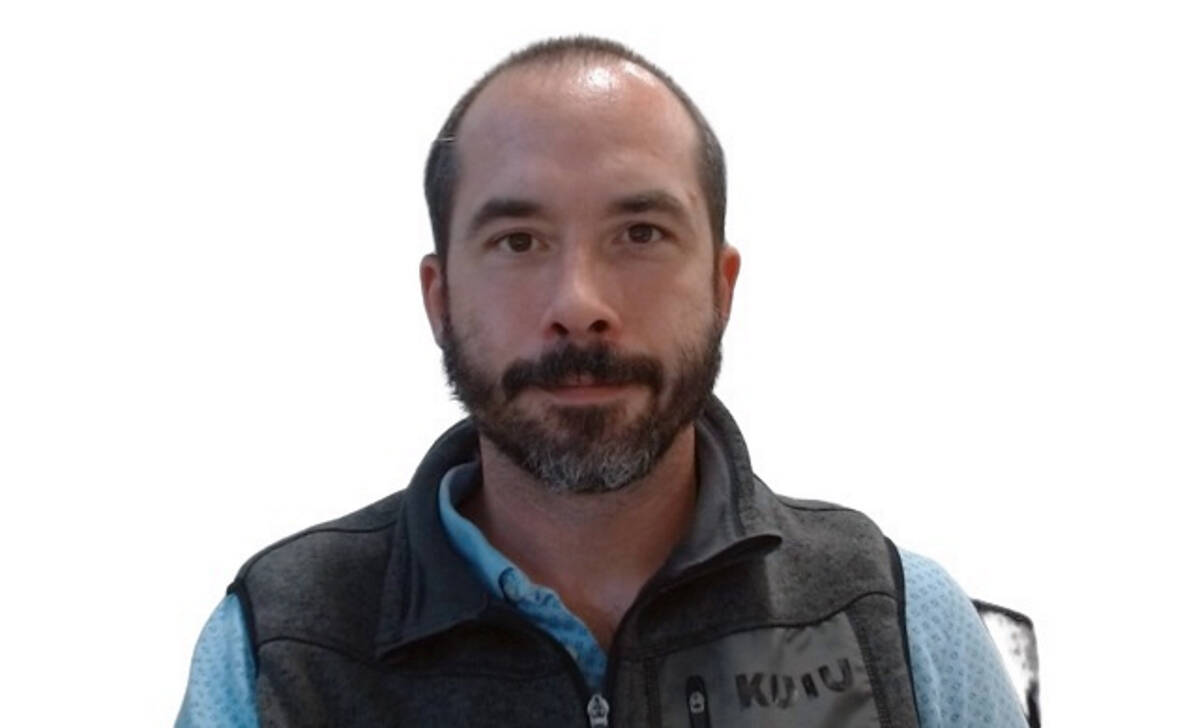
Rob Foote
1. On principle alone, I don’t agree with the sale at $1, solely for the fact that I don’t believe that the lot should have been purchased by the city in the first place. We aren’t a large enough centre to be immersing ourselves in real estate unless the purchase is meant to be developed for city infrastructure.
That said, the proposed development could be a big boon to the city and really help to broaden the tax base, although I reserve full judgement until I know what the 13 caveats are in their entirety. Since I am only a candidate at this point, I don’t know the caveats or the financial projections at this point in time.
2. Homelessness at a high level is a GNWT responsibility, but the city does have an important role to play. Creating a cross-functional team with members of both levels of government should be a priority in putting forth real solutions to alleviate the magnitude of the issue.
It is important to understand that not all homelessness is a result of addiction and mental health issues and there are plenty of examples of people who are homeless or under-housed due to the cost of living and low vacancy rate — both examples of situations the city has a larger influence on than social issues. It also is important to note that this isn’t unique to Yellowknife, but is admittedly more prevalent than in southern centres.
3. The city needs to market itself as an all-season destination for naturalists and adventure seekers, implement a hotel levy to capture value from visitors and connecting passengers and encourage partnerships with Indigenous governments to become key players in the logistics and remediation economies that will be valuable revenue sources once the mines exit their production phases.
4. I’d like to see (the) Ruth Inch retrofitted into a recreation centre geared towards youth — something like a multi-use park for scooters and skateboards encouraging physical and mental activity. Within this centre, we could have a music room, an arts centre and offer programming at the city level for those more interested in creative pursuits.
We get seven months of snow in Yellowknife and outside of organized activities led by outside organizations, there are very few positive activities for our youth to do in the winter that are accessible and cost conscious for everyone. I realize this is an expensive proposition, but should be considered once there is a little more economic certainty.
5. Increasing the tax base to account for reduced tax revenue from the mines, their ancillary industries, and ever increasing cost of providing services to residents and businesses. We need community growth to create economies of scale, and in order to do that, we have to provide a welcoming city that has the amenities and infrastructure already in place while carefully scrutinizing costs, prioritizing needs, and realizing operating efficiencies along the way.
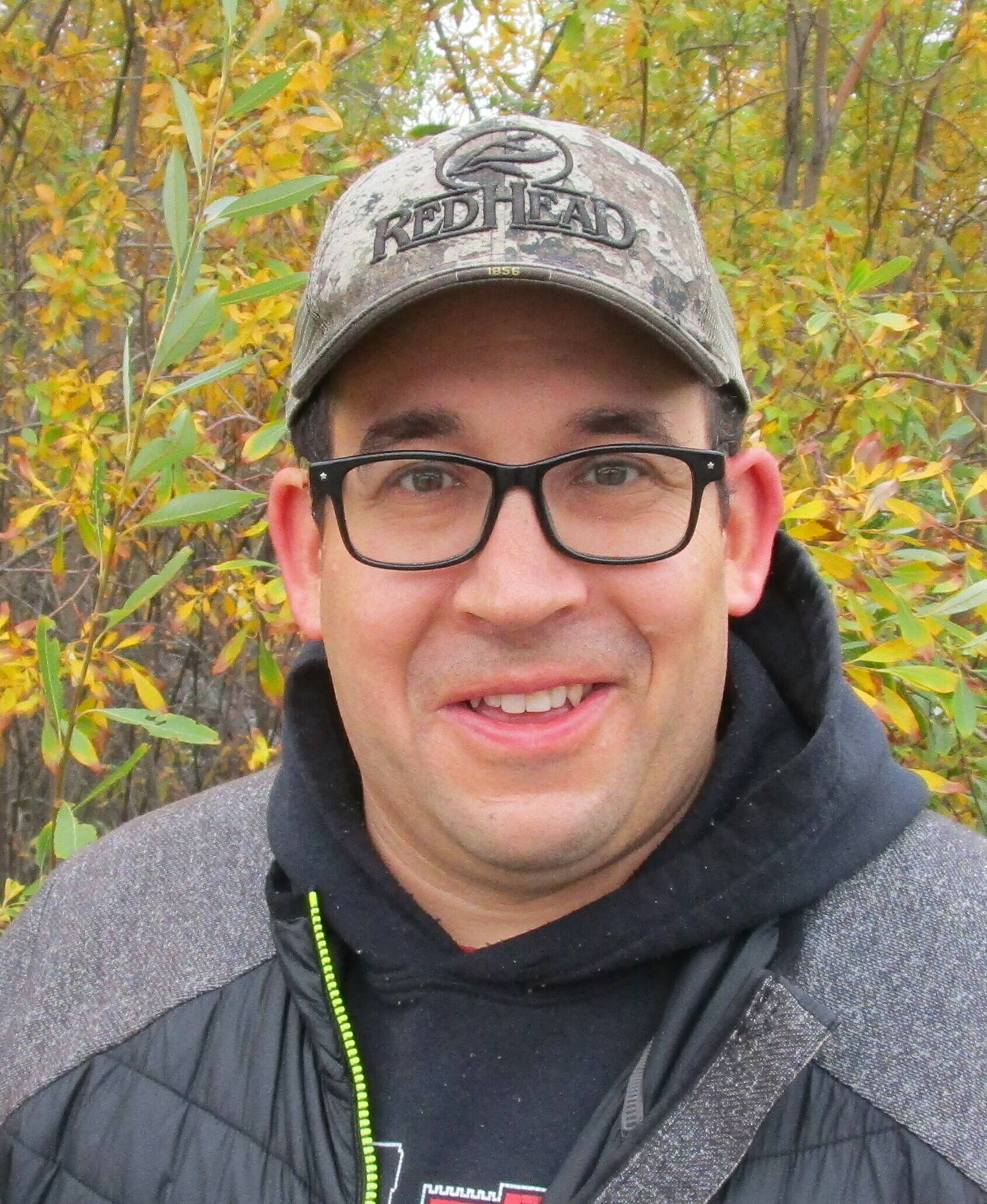
Stewart Pallard
1. No one spends someone else’s money as carefully as they do their own, and this is a classic example of what happens when people spend other people’s money.
The city took $1.3 million of taxpayers’ dollars and set it on fire. The site would have been developed by a private developer had the city never bought the lot in the first place, and the city would have saved $1.3 million of taxpayer dollars. This is an expensive way to build affordable housing. The city should avoid this type of activity as it leads to undermining of the public’s confidence in the city, it’s difficult to hold anyone accountable for this, and it raises valid criticisms of corporate welfare.
If $1 is the best deal, then take it, but the entire thing stinks. What concerns me is that the city isn’t doing any kind of review to ensure that this type of incident doesn’t happen again. This is unacceptable.
2. In a perfect world, it would be the GNWT. They have far more resources than the city, and some of the homeless are transient. The GNWT would be better equipped to keep track of them and assist them, since the GNWT is responsible for the entire territory. If the city and the GNWT get involved, we risk having a duplication of services.
For example, it isn’t the best use of taxpayer dollars to have a city and a GNWT social worker for every member of the homeless community, which happens in other cities in Canada and North America. I am not sure how much of this duplication is happening here, but it’s a concern. We also don’t live in a perfect world, so the city might have to pick up the slack where the GNWT is falling short. The city developed a plan to tackle homelessness — there are many aspects of the plan that I like — and I feel we should support the organizations doing the work in this area. I would love to talk more to the members of the community doing the work in this area and work together to find better ways to help them.
3. There’s still lots of good things happening in Yellowknife. The Giant Mine cleanup is going to be a source of jobs for a long time, and it’s good for our community that the mine site is getting cleaned up. Tourists are starting to come back, and we have a brand-new visitors center. It’s important to remember that Yellowknife was a good place to live before the diamond mines, and it will be after.
Therefore, to prepare for the closing of the diamond mines, the city needs to focus on providing good government, keep fees for things such as garbage disposal reasonable, keep taxes at modest levels, and be extremely mindful when spending taxpayer dollars. If the city accomplishes that, Yellowknifers will do the rest. We are extremely resourceful, innovative and resilient.
4. I would love to see a regulation-sized outdoor soccer field and some proper outdoor hockey rinks. One of my favourite things to do in the winter time is playing hockey outside with friends and family. However, I haven’t discussed this with residents while I’ve been campaigning, so I don’t know how Yellowknife residents feel about this issue or even the costs involved. Politicians need to remember that the citizens are the boss.
5. We have several very serious issues right now, but we know what they are. However, if you look over the past 20 years, the biggest issues to face Yellowknife were probably the 2008 (financial) crash and the Covid-19 pandemic. The GDP of the NWT still hasn’t recovered from the 2008 crash and Covid presented every level of government with difficult decisions. We still don’t know the full consequences of those decisions.
It’s unrealistic to expect the city to have been able to plan for either of these events. As a result, the city should stay focused on the things it does well and be extremely careful when taking on debt. Bad things happen and you want your financial house in order when they do. To answer the question, the most important issue will probably be one we didn’t see coming.
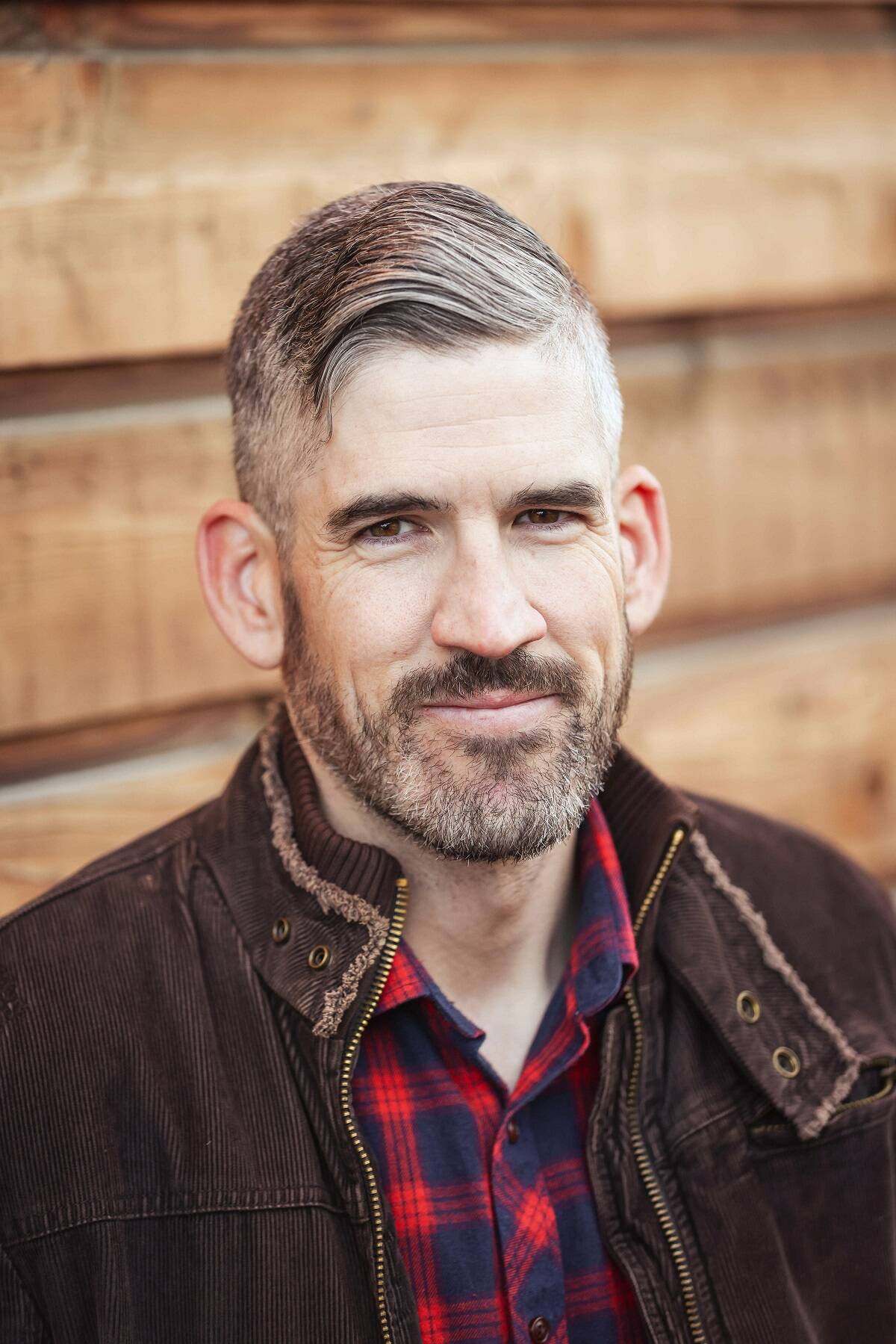
Rob Warburton
1. Yes, 100 per cent, I agree with city council’s approval to start negotiating a deal which may result in a sale price of $1. We desperately need more housing built, while in the midst of a housing crisis, as well as retail spaces for our small businesses. This isn’t what a former mayor recently called “corporate welfare at its finest,” it’s this current mayor and council cleaning up their predecessor’s mess.
It was a very poor decision to buy a bunch of land well above market value, that no one else wanted, with no plan for how to use it and then let them sit and miss out on millions of dollars in potential property taxes while increasing ours. The market clearly finds these lands unattractive and not worth what the city was asking. Time to do something else. That’s what we inherited and now we have a potential opportunity to use this land to improve our city.
2. Both. The city needs to continue to advocate for the GNWT to provide the resources and funding needed to help this issue in our city. As a member of the city’s Community Advisory Board on Homelessness, I have seen just how much work the city puts into this already. Where I see a need for the city to increase its efforts is around the issue of public safety.
We’ve heard lots about how folks don’t feel safe downtown. We’re facing a crisis of mental health and social trauma in our city and more cops just isn’t the answer. Community safety officer programs, like those established in Whitehorse and Teslin, Yukon, work. What we’re doing in Yellowknife isn’t. By working together with Indigenous governments, Indigenous organizations, the territorial government and community leaders, we can build a program which will keep public spaces safer while remaining sensitive to the inter-generational trauma fueling the crisis.
3. Pass the accommodation levy and start promoting and marketing our city as it is intended to. Not just to tourists, though — we need to also be promoting our city to potential residents and businesses as a place to invest their time and funds. Currently, anyone coming in has to figure out the investment or living landscape on their own. The city should help promote and support those who express interest in coming here.
The knowledge economy is going to play a larger role in our future economy than I think many realize. For now, that looks like a Yellowknife campus for the polytechnic university. While the location is causing a lot of debate, we cannot lose sight of the community benefits of having this new campus built: more students, an increase in our tax base, desperately needed housing units and, most importantly, a land-based and Indigenous-focused institution. Yes, it will affect the current uses of the space, but when weighed against the long-term community benefits, we must support it while insisting on a better consultation process from the GNWT.
4. As far as facilities, I do think once the new pool is completed, we will have adequate facilities to meet the uses for our residents. The possibility of repurposing the Ruth Inch Memorial Pool into a different use is also exciting when thinking how to adapt, reuse or repurpose how we use our current city facilities.
It could be an arts and cultural centre or a new performance space. Whatever it might be used for, the city should facilitate the use and operations of it by an outside organization to maximize its community benefit while minimizing the impact on city finances.
5. Addressing our housing crisis. Doing this will require focus and hard choices, especially over the next few years. If we can do that, while minimizing the costs to residents in a changing economic situation, I think we will be a much stronger and resilient community over the next 10 years.

Dwayne Simmons
1. No. As it stands right now, the developer would get the $1.45 million discount on the price of the land, and five years’ worth of tax abatements under the development incentive bylaw. Council would not have a say in this. For a project of this size, that could add up to an extra $5 million. I don’t think that was made clear to council. The tax abatement should be capped, especially given that there are already about 250 apartments under construction in or near downtown. The rental vacancy problem will be solved before this project even starts.
That said, I do think the developer chosen is the best partner for 50/50 lot redevelopment. There are numerous caveats on the title that restrict development, and the owner of the mall has the power to waive those caveats. I’m not against the project — it could result in big tax revenues and works toward downtown revitalization and housing options, but we need to negotiate a better deal.
2. This has been a hot topic in Yellowknife since my wife and I moved here in 2008. We have to be very careful not to take over GNWT responsibilities just because they aren’t doing a good enough job. We can’t afford it. It’s the responsibility of the GNWT to put programs, infrastructure, and action plans in place to tackle homelessness. There is currently a 300-person wait list for public housing. That’s not good enough, and we need to remind the GNWT of that.
That said, there are several pots of federal funding that are only accessible if the city is involved. So while the GNWT must take the lead, the city does have a role to play.
3. This is my top priority, if elected. The mines have been moving executive jobs south for years and the two biggest mines will now be scaling back or closing by 2025. We all knew this day would come. What we do over the next council term will determine whether the next generation will have the same quality of life we’ve enjoyed for years. But we can’t waste time talking about sectors of the economy we have no control over.
Tourism is something that is within the city’s control. Getting the hotel levy in place and creating a pocket of money to market our city will have a direct and immediate effect on our economy. We also have to do a much better job of our number one economic development tool: making land available for business growth.
4. My family has benefitted from the city’s recreational facilities, and I think it’s great that future generations will have even better facilities available to them. But that said, after the aquatic centre is built, we will have a pretty solid offering of facilities compared to other cities our size, and I personally don’t see the need for more in the short-term. In the coming years, it will be a time to tighten the belt and focus on other areas.
5. My platform has a strong focus on strengthening our economy. I think we have experienced a great quality of life over the last 20 years, but with the diamond mines scaling back and closing, that could be at risk.
One of the things I always try to teach my kids is to make a difference in your community and leave it in better shape than when you found it. Now it’s time to walk the walk.
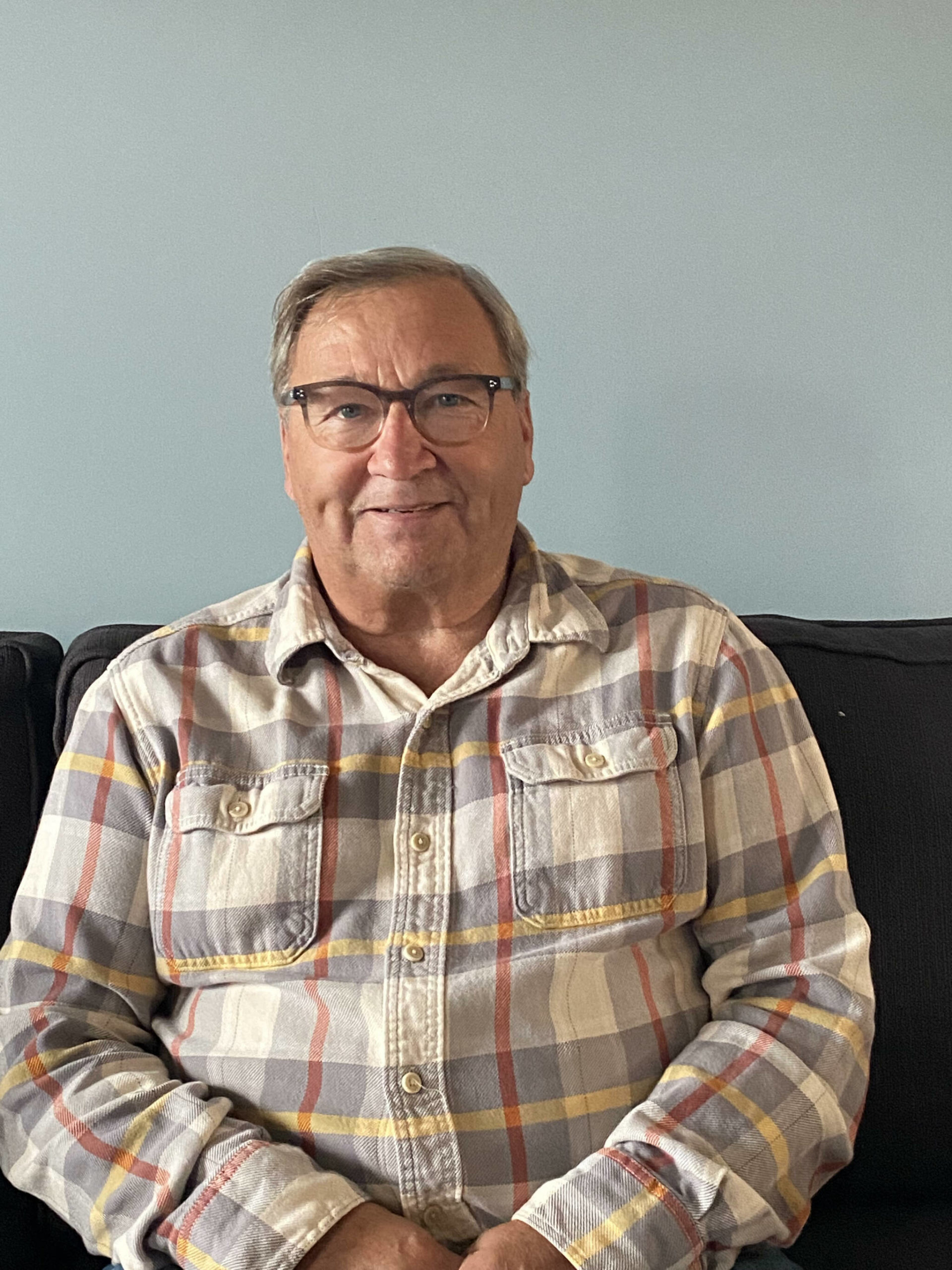
John Fredericks
1. I disagree with the sale of the 50/50 lot to Holloway Lodging Corp. for $1. We can only look forward to the council’s decision on the sale, but what has been done is already done. We must keep looking forward and stay positive and hope that Holloway Lodging Corp. develops the 50/50 lot as presented to the previous council. A lot of questions were left answered, but hopefully, we only need a little faith.
2. Homelessness is both the city’s and the GNWT responsibility, but is the political will there? All the stakeholders, including the city and GNWT, should sit down together and have open and meaningful conversations on the real issues. The city has a road map for a 10-year plan on homelessness, which was endorsed by council on June 26, 2017. What progress has been made since the endorsement? Will we have completed the homelessness plan by 2026? We need to define success and affordable housing.
I think that it is a much bigger problem than just finding affordable housing. Has the safe ride and sobering centre improved the problem on the streets? We all know the answer, but what are we doing to solve the problem? Until all the stakeholders sit down together and have open and meaningful conversations, it will still be a problem in Yellowknife. Who should be sitting at the table is a bigger decision and we need to get the right people in the room.
3. “Welcome to the Diamond Capital of North America.”
Hopefully, the city has been planning on this since Diavik made their presentation to council early in 2022. Will it be replaced by other mining such as zinc, uranium, silver or other gold mines? Only time will tell. Can residential and commercial construction fill the gap of the property tax base or will residents have to pay for the shortfall? Council will be faced with tough decisions if the proposed timeline for the mine closures stay on the predicted timeline.
4. With the investment that the city has committed to the aquatic centre, the bigger question is will there be any other money left over for other facilities? Will the new aquatic center generate any more revenue and how much will it cost to maintain it? Two questions left unanswered.
With the expansion to the fire hall in 2023, will there be enough money to maintain the facilities or will property taxes need to be increased?
5. The most important issue facing the city over the next 10 years would definitely be a solid tax base. With inflation hurting the residents and the city, the new council will have to make some tough decisions when they face budget deliberations in November. Are the service levels what the residents want? Should we improve some and scale down on others? What are the residents willing to pay for those services?
Homelessness is also a big problem and it needs more time to be dedicated to the real problem. We need to be real serious about revitalizing the downtown core, economic development and better collaboration with GNWT, Indigenous governments and the non-profit sector.

Mike Martin
1. I think we need to be clear here. Negotiations are still ongoing to finalize any sale of this lot. Priorities of what is needed as part of the downtown revitalization initiative will need to be guaranteed as the negotiations continue.
There is no question that affordable housing is required in Yellowknife. While I am not in favour of the lot potentially being sold for $1 while this development still falls under the Development Incentive Program bylaw providing tax abatements, it’s not without its merits.
The city needs to ensure there is a financial commitment from the developer, which has already been requested by the current council. In addition, the development plan must ensure that some or all of the proposed housing units are earmarked as affordable housing, retail space is guaranteed, and public paid parking is provided.
In addition, development fees, long-term revenues created by property taxes, as well as increased expenditures in the local economy, need consideration.
Until the full extent of the proposed development can be negotiated, the financial revenues to the city and its residents cannot be fully quantified. It is the responsibility of the future council to ensure that these negotiations result in a net positive for the city and its residents, both economically and financially. Anything less would be unacceptable.
2. The short answer is both. With homelessness comes a variety of health and social services issues, and some of the homeless are from the NWT, but not residents of Yellowknife contributing to the municipal tax base. For these two reasons alone, this is a GNWT mandate.
That said, homelessness is more prevalent in the city and has impacts on city resources and its residents. The city has and must have the capability to enhance the infrastructure and resources to support providing opportunities for the homeless to contribute to the growth of the city and the territory with partnerships at all levels of government, industry and the public.
While this topic is the main mandate of the GNWT, and for that matter the federal government, the city has a major part to play in a support role through lands, bylaws, community policing priorities, etc. This topic can only be addressed by a multi-governmental approach. The first big step is for the city to foster and leverage relationships with the GNWT to support the homelessness initiative for the betterment of the city and the territory as a whole.
3. Simply put, economic diversification. Overall reliance on one sector alone does not allow for a government and residents to weather an economic storm.
Areas such as agriculture — livestock, greenhouses, commercial fishing, etc. — need further consideration and implementation. In addition, the city can be the main centre to provide supplies and technical service in support of the remediation economy.
The city can support these areas by working with the GNWT to free up commercial and residential lands for future development, consider economic development and diversification in bylaw creation and amendments, as well as continue to work on the business retention and expansion program, as identified in the City of Yellowknife Economic Development Strategy 2020-2024.
4. The city currently has a variety of indoor and outdoor recreational facilities, including the Fieldhouse, Multiplex, ball fields, ski club chalet and library, to name a few. I believe the focus moving forward would be to identify the maintenance and enhancement needs of these facilities through asset management planning. This will allow the city to ensure our existing facilities are proactively managed so they can continue to provide the maximum benefit to the community while allowing for proper financial management and planning of fiscal expenditures required for their maintenance.
5. From what I have been hearing from residents, I believe the cost of living is likely one of the largest concerns. With an increase in utilities, materials, housing and taxes, it is getting harder and harder for people to be able to live and want to live here. With the cost of living getting to this point, not only will it be difficult to attract new residents to the city, but it will become increasingly harder to keep our current residents.

Tom McLennan
1. I support the city using land to achieve good outcomes for the community. To support this project, I would like to see measurable progress towards getting affordable housing built, downtown revitalization, and infrastructure for a downtown district heating system.
Specifically, I would look for the city to define “affordable” and include a significant number (20-30 per cent) of affordable units in the project. These units must also stay affordable for as long as possible. In order to make progress on downtown revitalization, it is important that the storefront and sidewalk experience be engaging and that rents align with potential sales. I would also like to see the street-level commercial space be linked with the mall. Finally, I believe it is crucial that we take this opportunity to begin construction of a downtown district heating system. Such a system would be more cost effective for tenants and produce fewer emissions.
It is important to note here that Holloway Lodging Corp. is not the only organization who could access. They are the first ones to come forward with a proposal and the city got approval to negotiate below the asking price. The city is now open to negotiate with anyone who puts in a proposal. I strongly encourage anyone with great ideas to add affordable housing to our community to come forward with $1.25 and lay them out. I would love to see more offers on the table.
2. Homelessness is the responsibility of all levels of government: federal, territorial, Indigenous and municipal. To effectively help our neighbours facing homelessness, all governments must work collaboratively to create complete programs. Programs should feed and blend into one another, so that someone doesn’t receive the beginnings of care or assistance before being thrown back on the street. City council and administration must work closely with Indigenous, federal, and territorial governments and non-profit organizations to make sure people go from treatment — if needed — to transitional housing to wrap-around social supports like job training and mental health support, and then to longer-term housing.
Programs that end or are disjointed, as are most existing programs, are very likely to fail.
3. We need to give new residents a reason to come, and people who are here a good reason to stay. That comes down to supporting a more diverse economy, and addressing the housing crisis.
As far as diversifying the economy, I believe a university can play a big role. This means not only a campus, but programming that will enable Northerners to learn applicable skills in the North as well as attracting southern students and research dollars. Tourism can play a crucial role as well. The city can support the industry by encouraging arts and culture, by facilitating tourism infrastructure and by working with other levels of governments to address social issues downtown.
If we’re going to weather the uncertainty, we also need to get people places to live. That means incentivizing affordable housing and putting land in the city to good use to encourage more building in the right places.
In terms of the physical closing of the mines, I believe we should look ahead to see where we can reuse materials in town. I’m sure material from Diavik can be used in housing developments, for workers camps, or in the construction of the university campus.
4. I would like to see our current facilities used more effectively. There are a ton of ways to do this.
The Ruth Inch Memorial Pool should be repurposed into much-needed community space. Some potential ideas I would like to see explored would be an arts centre, new library, social centre for seniors or co-working space.
The new pool can be used more efficiently by encouraging school boards to incorporate children’s swimming lessons into physical education programming. This would provide equitable access for all children and free up time in the evenings and weekends for seniors and other adults who currently struggle to get access to the pool.
I would also push for seniors passes to our recreation facilities to be usable any day of the week instead of the limited passes we currently have. One new facility I would like to cost out is a skate park. I have heard several times while door knocking that the current park is unusable.
5. In my view, the most pressing issues are twofold: the challenge of continuing to attract people and keep them here as we face down economic uncertainty, and climate change – how our city can do our part to mitigate emissions and adapt to the inevitable changes.
My approach to addressing economic uncertainty is laid out in question number three, so I’ll talk about climate change. The university would be a great opportunity to trial innovative technologies and solutions to mitigate and adapt to climate change. The city should continue to be a leader in this respect and look for partnerships and opportunities to lower their own emissions. I also believe that local food production will be key to ensuring Yellowknife is a resilient city going forward. The city can offer micro-loans for residents to plant garden beds, it can offer public land as a place to grow food and it can lobby the GNWT to top up local food producers’ incomes to a living wage.

Steve Payne
1. I support the city in selling the 50/50 lot to Holloway. The lot has been sitting vacant for over 10 years. The project will generate revenue for the city in terms of development fees and taxes. This development will also give the city some badly needed rentals, retail spaces and some affordable housing.
2. Homelessness is everyone’s responsibility. The city has been able to apply for federal funding to allocate to non-governmental organizations to address the issue. The GNWT just announced that they will look into a Northern treatment option again, so I feel this is a great step forward. It’s going to take teamwork from the whole territory to address this.
3. We keep doing what we’re doing: create an environment for business to thrive, and make Yellowknife attractive for tourists. We will never replace the big mines, but with a diversified economy, we should be able to weather this transformational economic storm.
4. The city has done a great job with its facilities. We have a broad range of recreational activities offered in the city, more than most cities our size.
5. I can’t pick one issue. We have a changing world to acclimate to. But if we’re looking for some to identify, I think in the next 10 years with finances being tighter, we will need to focus on the core responsibilities of running a city and get back to basics — concentrate on must-haves versus nice-to-haves.
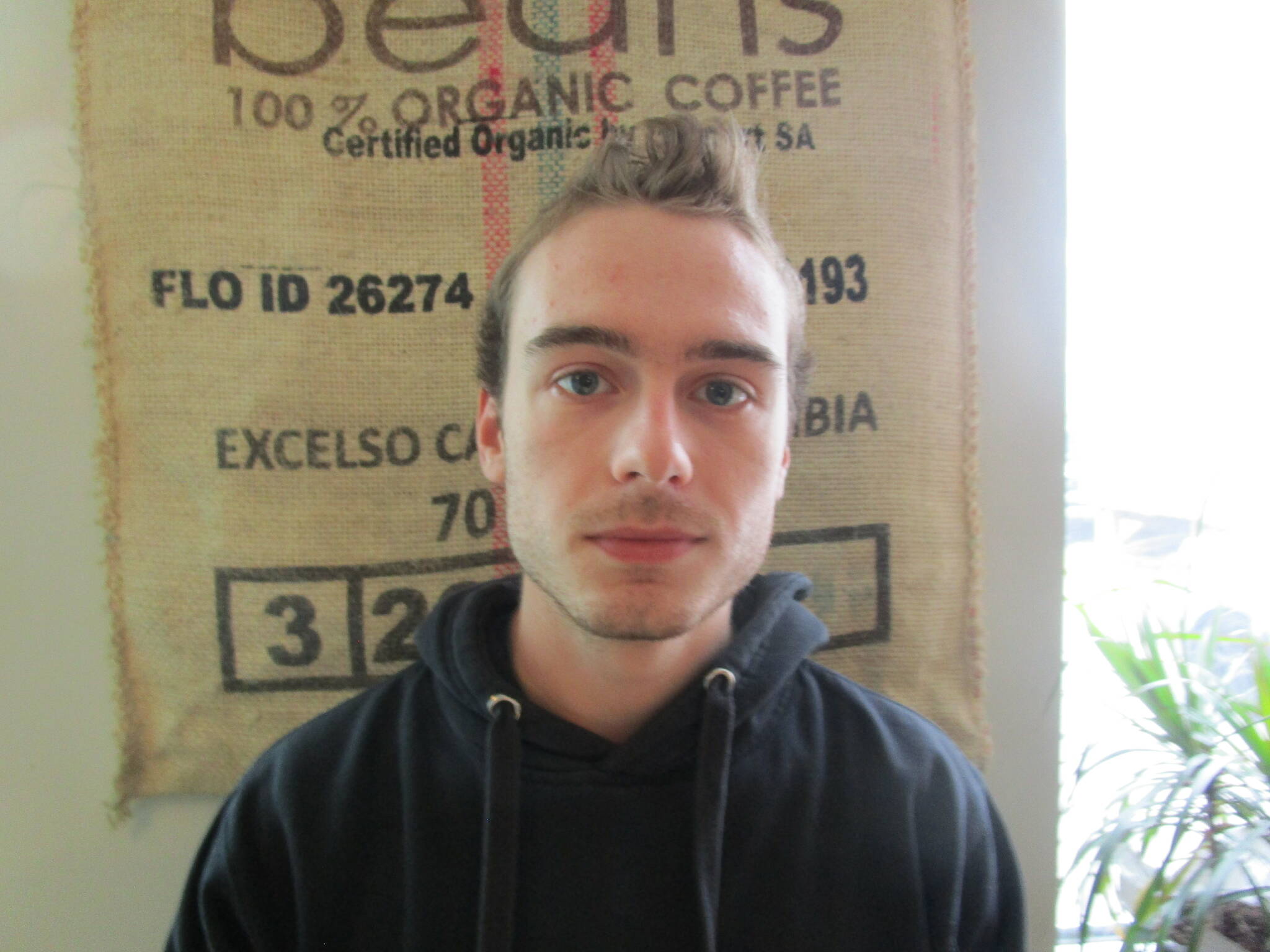
Devon Hodder
1. We are in a housing crisis and this development will add 180 housing units along with street-front retail space. I support the city taking steps to incentivize development. However, not only will this multi-million dollar corporation get a substantial discount on the purchase price, but it will also get millions of dollars in tax abatements.
I support the city asking Holloway to earmark a percentage of the units for affordable housing. However, the city’s current definition of affordable does not go far enough and means nothing in its current form. With the millions of dollars of incentive Yellowknife taxpayers are providing Holloway, I would like to see the corporation award contracts to local businesses.
2. It is no secret that homelessness and other social issues are highly prevalent in our community, and have been for some time. This is an incredibly important issue that will take collaboration between the city, GNWT, non-governmental organizations, Indigenous governments and the federal government to truly make a dent.
We need to take a holistic approach combining health, counselling, shelter, education and employment supports. I would like to see a treatment centre opened in the Yellowknife region.
3. The closure of Ekati and Diavik is a dark cloud over the future of the Yellowknife economy. We are entering a critical time and the city must take action to ensure Yellowknifers aren’t left holding the bag. We need to diversify our economy by funding tourism investment, supporting a polytechnic university, continuing work on the Yellowknife Arts Master Plan and Agriculture Strategy, supporting sustainable mineral extraction and mine remediation, and making Yellowknife a place where developers and businesses want to invest.
4. I would like to see more recreational facilities, both indoors and outdoors. One of the concerns I have heard from youth is the lack of things to do. We will have the existing Ruth Inch Memorial Pool that, I believe, should be converted to an indoor skate park, art space, library and general community area.
5. I believe the most important issues facing our city right now are the looming mine closures, housing or lack thereof, homelessness and addiction, and the high cost of living. We are entering a critical time for the future of our city and Yellowknifers must elect councillors that are willing to put in the work.

Mayor Rebecca Alty
1. One of the riskiest phases of developing rental housing is during the construction phase. So in lieu of giving a subsidy on an annual basis while operating, the city is front-loading our contribution and providing the subsidy at the start so that the project gets off the ground.
Beyond the need for affordable housing, we need more housing period, and this project will add a lot of housing right in the downtown. From a revitalization perspective, it’ll add a lot of residents and customers in the downtown too. With 180 units, that’s a lot of people in the heart of our downtown.
From a financial perspective, it adds tax revenue without adding more expenses because we already plow the roads in the area, have buses in the area, etc. With inflation, city expenses increase and we need new revenue to be able to cover these expenses.
2. There’s a “housing continuum”: from homelessness to emergency shelters to transitional housing to supportive housing to affordable housing to market housing. The federal, territorial and municipal governments have a role to play in all of them. Funding for the construction and operation of housing from emergency shelters to supportive housing is funded by the federal and territorial governments.
There are things that the city can do to encourage housing development: flexibility in our zoning bylaw; reviewing and updating our development incentive bylaw; providing land at a discount in exchange for affordable housing etc.
But at the end of the day, without federal and territorial funding, homes for people currently experiencing homelessness won’t get built. The city can ensure it goes smoothly from a permitting process, and can provide support with tax abatements and by waiving permitting fees.
3. Some of the big opportunities include the expansion of Aurora College into a polytechnic. The city can support the advancement of this project by donating land on a portion of Tin Can Hill to build it. It’ll be an opportunity to have a beautiful post-secondary institute on the shores of Great Slave Lake and nature trails around and through it.
Tourism is another big economic driver in Yellowknife, and by creating and implementing the accommodation levy in the next term, we’ll be able to raise revenue to market Yellowknife to more tourists.
Mining in the area, and with Yellowknife as a hub to other mining projects in the NWT and Nunavut, continues to be an opportunity. We should continue to work with the NWT and Nunavut Chamber of Mines to understand the needs of future mines.
4. I would like to see a focus more on our natural assets and outdoor spaces. For example, improving signage and awareness of all of the different trails around town – perhaps one of the recreation activities that you can sign-up for is to go and explore, as a group, the different trails around town; seeing if neighbourhoods want to maintain an ice rink in their local park like they do in Whitehorse and Ottawa; looking at the feasibility of building a rental location near Somba K’e Park, where a business can rent out recreation items like skis, skates, paddle boards, kayaks, canoes etc. (a similar model to how we own the Wildcat Cafe, but lease it to a company to run).
5. Over the next 10 years, it’s hard to pick just one because the issues are connected: the economy; housing; climate change; mental health and addictions; and taxes. When making decisions, we can’t make them in a silo. We need to take all of them into perspective.
